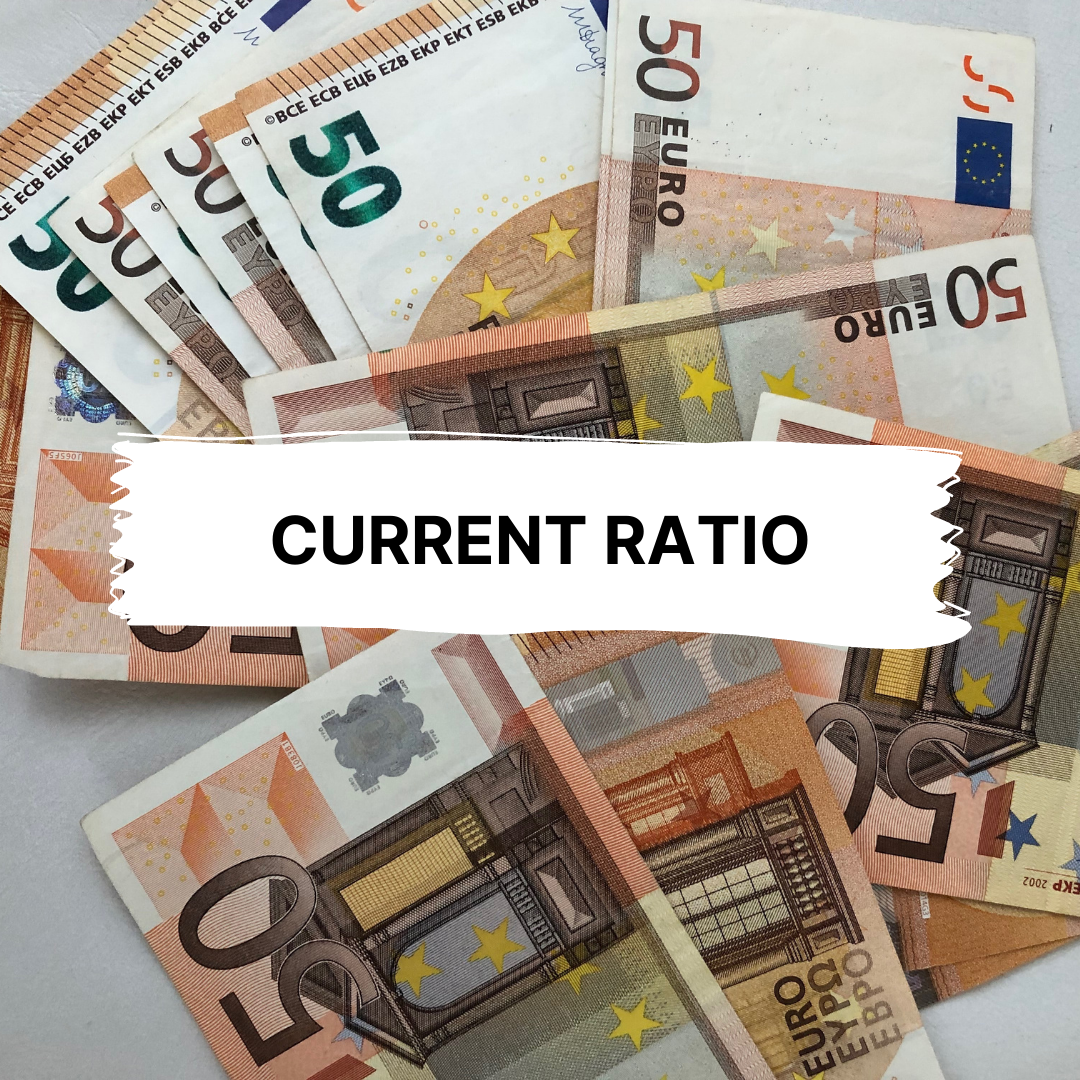Market value ratios are important to track the share values of a company. Whether you are a business owner, finance manager, or investor, you need market value ratios to make important decisions about how to control and regulate your money or resources.
If you are someone trying to evaluate the market value of shares, there are several market value ratios that can help give you an insight into the common financial metrics of a company. In this article, we will cover a few of these important market value ratios, along with examples.
The topics to be covered here are:
- What Are Market Value Ratios?
- Major Market Value Ratio Types
- Book Value Per Share
- Earnings Per Share
- Cash Earnings Per Share (CEPS)
- Dividend Yield
- Market Value Per Share
- Market Book Ratio
- Price-Earnings Ratio
- Uses of Market Value Ratios
What Are Market Value Ratios?
Market value ratios are financial metrics that measure and analyze stock prices and compare market prices with those of competitors and against other facts and figures. These ratios track the financial performance of public companies to understand their position in the market.
Through market value ratios, you can determine whether the stocks of a particular company are overvalued, undervalued, or rightly valued. You can also figure out the optimal prices at which the shares should be bought or sold. Other than evaluating the present share price of a public company’s stock, these metrics also help existing and potential investors to make financial decisions about investing in shares.
Various financial metrics control share prices in the stock market. For business owners as well as investors, these metrics are important to track so that they do not lose their money in wrong financial decisions.
Thus, the calculation, interpretation, and analysis of market value ratios is crucial to make the right investment at the right time.
Major Market Value Ratio Types
There are several market value ratios that provide different insights into a company’s performance. Each of these figures, individually and together, helps investors decide whether to put money in the company and, if yes, when.
Here, we will cover a few important market value ratios, with their formula and example. Whether you are a company owner or an investor, knowing these details will help you make better financial decisions.
Book Value Per Share
The book value per share is one of the most important market value ratios as it gives you an idea about the value of each share in the market. It is calculated by dividing the aggregated amount of stockholders’ equity by the number of outstanding shares.
This ratio provides a benchmark to check if the market value of each share is high or low, which can then be analyzed to make buying and selling decisions. Basically, it compares the market price and book value of a share to determine how close they are.
Of all market value ratios, the book value per share shows the relation between the book value of a company, which is the total equity excluding the shareholders’ preference shares, and the outstanding shares in the market. It is a summation of the contributed value plus operational profit and loss of a company.
Formula
The formula of book value per share is:
Book Value Per Share = (Equity share capital of the company + All reserves and surplus of shareholders) / Number of outstanding equity shares of the company
Example
If you consider a company that has total assets of $10 million and total liabilities of $4 million, the total equity of the company would be $6 million. Of this, the company has $1 million in preferred stock, so the amount available to common shareholders is $5 million.
Let us assume that there are 1 million outstanding shares of this company. Hence, the book value per share would be:
Book Value Per Share = 6000000 / 1000000
= 6, i.e. $6
Earnings Per Share
Earnings per share is a part of the market value ratios that determine the worth of a share to the investor. It is calculated as the reported earnings of the business, divided by the number of shares outstanding. This calculation has several variables that need to be taken into account.
This ratio shows the earnings of the company in a particular period, with respect to the outstanding number of shares that the company has during that period. Calculating this lets you determine whether a share is worth investing in.
Formula
The simple formula to calculate earnings per share is:
Earnings Per Share = (Net income - Preferred dividends) / Number of equity shares outstanding
Example
Let us consider a company that has had a net income of $18 million in 2018. In the same time period, its preferred stock dividends had a value of $2 million. The number of equity shares outstanding was 10 million.
Thus, the earnings per share can be calculated in the following way:
Net profit = 18 million - 2 million
= $16 million
Hence, Earnings Per Share = 16 million / 10 million
= $1.6
Thus, the earnings per share of the company is $1.6. This accounts for the impact of convertible preferred shares, warrants, options, and other dilutive securities.
Cash Earnings Per Share (CEPS)
Cash earnings per share are also called operating cash flow. It is one of the market value ratios that determine a company’s financial performance by comparing cash flow to the number of shares outstanding.
Contrary to what some believe, it is different from net profit measure and earnings per share. It is calculated without non-cash components like depreciation, hence it can be considered more reliable among other market value ratios. It gives you an insight into the actual cash that a company earns from each share.
As with most financial ratios, the higher the value is, the better it is considered that the performance would be. The cash earnings per share of a company can be used to compare its performance with other companies or business trends.
Formula
There is more than one way of calculating the cash earnings per share when it comes to the formulas of market value ratios. Let us see how.
In one way, the CEPS formula is:
CEPS = Operating Cash Flow / Number of Shares Outstanding
This is a variation of the earnings per share calculation. The only exception is the inclusion of all non-cash items in profit and loss statements. You can get these figures from company balance sheets or financial statements.
To break down the formula further,
CEPS = (Net earnings of the company + All non-cash expenses - Tax provision) / Outstanding number of equity shares
Here, non-cash expenses include depreciation, amortization, etc. Sometimes, the result of both these formulas may vary slightly.
Example
Let’s consider a case that has the operating cash flow value in 2019 as 150, with the number of shares outstanding as 30. Hence, the cash earnings per share would be:
CEPS = Operating cash flow/number of outstanding shares
= 150 / 30
= 5
Thus, the CEPS here is $5.
Dividend Yield
You cannot look at market value ratios without considering dividend yield. It is one of the most important market value ratios as it calculates the return on investment for investors if they wish to buy shares at the current market price.
Dividend yield is calculated by dividing the total dividends paid per year by the market price of the stock. It helps in measuring the dividend amount distributed in a year against the number of outstanding shares. Investors can then decide whether they want to invest in shares that pay certain dividends against the current market price of the share.
Formula
The formula to calculate dividend yield is:
Dividend Yield = Annual dividend per share / Stock price of each share
For instance, if your dividend yield is 5%, it means that you will get a return of 5% in addition to the capital gain if you buy the shares at the current market price. Needless to say, the higher this number is, the more profit you are likely to make.
Example
Let’s take the example of a company that pays quarterly dividends in the amounts of $3, $3.5, $3.25, and $3.80. The total dividend payments of this company for a year would be $13.55. Now, if the price of its stock is $80, you can get the dividend yield by:
Dividend Yield = $13.55 / $80
= 0.17, or 17% approx
This means the company’s stocks are capable of giving you 17% returns if you buy them at the current market price.
Market Value Per Share
Market value per share, as the name suggests, reveals the value that each share of a company’s stock has in the market. It is the core of all market value ratios as many other ratios are affected or determined by this value.
Market value per share is calculated by dividing the total market value of the business by the total number of shares outstanding. This tells us the price of each share in the market, which is commonly known as the going price of a share.
Formula
Of all market value ratios, the market value per share is one of the simplest to determine. Its formula is:
Market Value Per Share = Total capitalization of the business / Number of shares outstanding
This will give you the market value of each share, which will then help you determine whether to invest in a company’s stock.
Example
Let’s consider a company that has a total market value of $20 million. The number of shares it has in the market is 5 million. Hence, the market value of each share of this company would be:
Market Value Per Share = 20 million / 5 million = 4
This means that each share is sold at the price of $4 in the market.
Market to Book Ratio
Market value ratios determine the financial position of a company in the market. What better than market to book ratio to determine that. This ratio shows the relationship between the market value of a share and its book value. Thus, a potential investor can easily determine the difference between the two to check whether the share is undervalued or overvalued as per the equity standing in the books.
Simply put, the market to book ratio tells you how much an investor is paying against each dollar of book value in the balance sheet and expense report. It is also known as the price to book value.
Formula
The market to book ratio is calculated with this formula:
Market to book ratio = Market price per share / Book value per share
It can also be detailed as:
Market to book ratio = Market capitalization / Book value
The first formula will give you information about each share, whereas the second formula will give you an insight into the total value of the company.
To calculate the book value, use this formula:
Book value = Total assets - Total liabilities - Preferred stock - Intangible assets
To calculate the market value, use this formula:
Market Value = Market price per share * Number of equity shares outstanding
Example
If a company has its share listed at $10 in the market and its book value per share is $8.5, then the market to book ratio will be:
Market to book ratio = 10 / 8.5
=$1.17
Price Earnings Ratio
The last of the market value ratios that we will cover in detail is price earnings ratio. It is calculated by dividing the current market price of a share by the reported earnings from that share. The multiple is then used to evaluate how a share is priced in comparison to competing companies.
This ratio is very common and mostly used out of all market value ratios. It is measured as the current price of a share against the earnings the company has reported in that financial period for each share.
Formula
The formula of price earnings (PE) ratio is:
PE ratio = Market price per share / Earnings per share
Example
Simply put, if a company has listed its shares at $15 each in the market and the earnings from that share is $10, the PE ratio will be:
PE ratio = 15 / 10
= 1.5
Hence, the market price of this share is 1.5 times the earnings of the company.
Other Market Value Ratios
Some other market value ratios that you can consider are dividend payout ratio, dividend policy ratio, price sales ratio, net asset value per share, price to research ratio, etc.
Uses of Market Value Ratios
There are several uses of market value ratios.
- Market value ratios give insights to an investor about share prices and the financial efficiency of a company
- They help to analyze the company’s future prospects
- Market value ratios also get you about new stock market trends
- They can be used to determine which undervalued or overvalued shares are likely to change performance in the future
Conclusion
Market value ratios give an objective view of a company’s financial position in the stock market. Since these are expressed in numbers and figures, you can get a clear picture of the company’s assets and share values without being misled. These are more important to track for investors rather than business owners, which is why you should be more aware of how to calculate these.
Key Takeaways
- Market value ratios are financial metrics that help you determine how the company is faring in the stock market.
2. We have covered the definition, formula, and examples of the following market value ratios here:
- Book Value Per Share
- Earnings Per Share
- Cash Earnings Per Share (CEPS)
- Dividend Yield
- Market Value Per Share
- Market Book Ratio
- Price-Earnings Ratio
3. Some other market value ratios to be considered are dividend payout ratio, dividend policy ratio, price sales ratio, net asset value per share, price to research ratio, and so on.
4. By calculating market value ratios, you can determine the financial efficiency of a company, predict future trends, and make wise investment decisions.
Related Articles











